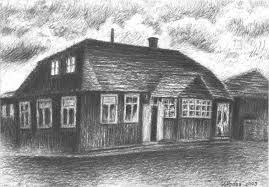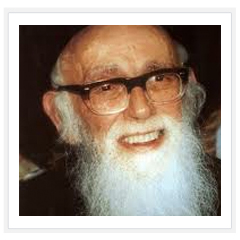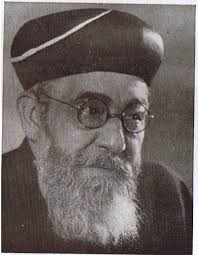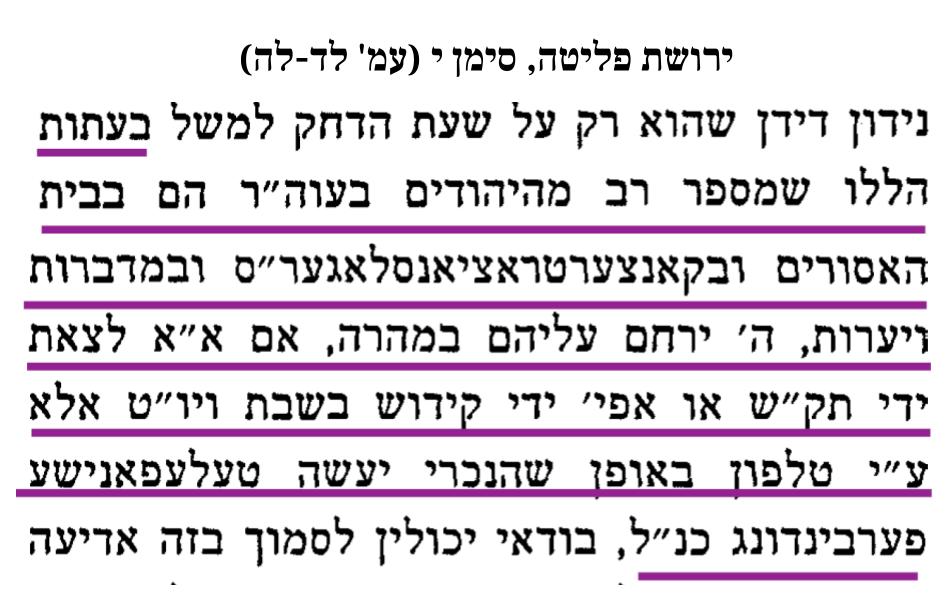
The fifth chapter of Masechet Berachot contains many of the Halakhot related to the amida. The opening phrase of the chapter, “ עומדים להתפלל – We rise to Pray” is a direct reference to the amida, which literally means “the standing prayer.” This idea appears in three Tannaitic texts, all within the first page of this chapter. Just as R. Simlai’s text from page 32a was properly about the amida and then transitioned to a discussion of pesukei d’zimra, these texts enact a similar refocusing. Let us begin by introducing the texts and briefly noting the shift in focus.
משנה ברכות ה׳ (ברכות ל ב)
אֵין עוֹמְדִין לְהִתְפַּלֵּל אֶלָּא מִתּוֹךְ כּוֹבֶד רֹאשׁ.
Mishna Berachot 5:1 (Berakhot 30b)
We rise to pray only from a place of solemnity
בבלי מסכת ברכות ל״א א
תָּנוּ רַבָּנַן: אֵין עוֹמְדִין לְהִתְפַּלֵּל לֹא מִתּוֹךְ דִּין, וְלֹא מִתּוֹךְ דְּבַר הֲלָכָה, אֶלָּא מִתּוֹךְ הֲלָכָה פְּסוּקָה….תָּנוּ רַבָּנַן: אֵין עוֹמְדִין לְהִתְפַּלֵּל לֹא מִתּוֹךְ עַצְבוּת, וְלֹא מִתּוֹךְ עַצְלוּת, וְלֹא מִתּוֹךְ שְׂחוֹק, וְלֹא מִתּוֹךְ שִׂיחָה, וְלֹא מִתּוֹךְ קַלּוּת רֹאשׁ, וְלֹא מִתּוֹךְ דְּבָרִים בְּטֵלִים, אֶלָּא מִתּוֹךְ שִׂמְחָה שֶׁל מִצְוָה.
Bavli Berakhot 31a
Our Rabbis have taught: We do not rise to prayer from a place of strict judgement and not from a place of complex Halakhic analysis, rather only from a place of settled law…Our Rabbis have taught: We do not rise to prayer from a place of sadness and not from laziness and not from laughter and not from idle chatter and not from levity and not from foolish matters rather only from a place of the joy of Mitzvot.
These three tannaitic texts offer three models for how we are meant to rise to pray, from a place of: 1) solemnity, 2) settled law or, 3) the joy of a Mitzvah. Each of these represents a very different mindset that might be ideal for prayer. First we learn that prayer comes with emotional and spiritual weight. (כבד ראש literally means heaviness of the head). Then we are taught that prayer demands complete focus such that our minds may not wander to a prior debate about a matter of law. Finally, we learn that prayer requires religious joy. These three ideas offer us a clear insight into the rabbinic notion of prayer: serious, focused and joyous. The Rabbis understood that how you enter the prayer space is significant. They encourage us to prepare emotionally for the power of the divine encounter. How does this bring us to pesukei d’zimra?
The gemara, after quoting the first berayta about settled law, then offers a few examples of what that phrase means. We learn of a debate between Rav Ashi (in some texts the amora is named Rav Simi bar Ashi) and the Rabbanan about how we pasken. The Rabbanan clearly decides in accordance with the Mishna, and the gemara teaches that Rav Ashi sides with the berayta.
There is a debate between the Rif and Rashi as to which berayta Rav [Simi bar] Ashi meant to bring in opposition to the Rabbanan. According to Rashi (ברכות לא. ד״ה ר׳ אשי), Rav Ashi paskened like the first berayta that we are required to rise to prayer from settled law. According to the Rif (ברכות לג. בדפיו) Rav Simi bar Ashi meant to pasken like the second berayta, that we are required to rise to prayer from a place of the joy of Mitzvah. This debate is interesting on a textual level and may have some valuable technical implications. However, for our purpose, the significant moment comes when these texts — which on their face have nothing to do with pesukei d’zimra — are moved into our story of pesukei d’zimra.
Tosafot on the page make an astounding comment that shifts this entire discourse.
תוספות מסכת ברכות דף ל”א א, רבנן עבדי כמתניתין
וכותייהו קי”ל. ולכן אין מתפללין מתוך קלות ראש ושחוק,
אלא מתוך כובד ראש ושמחה של מצוה כגון שעסק בדברי תורה.
ולכן נהגו לומר פסוקי דזמרה ואשרי קודם תפלה.
Tosafot, Berachot 31a s.v. the rabbanan behave like the Mishna
And we hold like them. Therefore we do not rise to prayer from a place of frivolity and silliness. Rather, [we rise to prayer] from a place of solemnity and the joy of a Mitzvah, like being involved with matters of Torah. And therefore the practice (nahagu) is to recite pesukei d’zimra and Ashrei before the amida.
This short comment of Tosafot says that we pasken like the Mishna (solemnity) over the first berayta (settled law) in addition to the second berayta which invokes the joy of a Mitzvah. In addition, Tosafot also clarifies that we fulfill the guidance of these texts through the recitation of pesukei d’zimra. Whereas for Rav Natronai pesukei d’zimra is meant to be שבח (praise) before בקשה (petition), for Tosafot pesukei d’zimra is meant to be a combination of solemnity and joy. This combination of emotions is not easy. The gemara in two places, Berachot 30b (on our Mishna!) and Yoma 4b, quotes a short comment on the verse in Tehilim:
תהלים ב:י”א
עִבְדוּ אֶת יְ-וָק בְּיִרְאָה וְגִילוּ בִּרְעָדָה
Psalm 2:11
Worship God in awe and exult with trembling
In trying to explain the apparently contradictory emotional state of both elation (גילו) and trembling (רעדה), the gemara says:
בבלי ברכות ל’ ב ויומא ד’ ב
אָמַר רַב אַדָּא בַּר מַתְנָא אָמַר רַבָּה בִּמְקוֹם גִּילָה שָׁם תְּהֵא רְעָדָה.
Bavli, Berachot 30b & Yoma 4b
Rav Ada bar Matna said in the name of Rabba, “In the place of exultation there should be trembling.”
Tosafot’s description of pesukei d’zimra as a fulfillment of both solemnity and joy appears to echo this idea of Rav Ada bar Matner in the name of Rabba. Bringing together competing emotions makes tefila difficult and leaves room for a variety of different internal experiences. We began with the idea of Hallel and praise, and now we see pesukei d’zimra as a combination of joy and solemnity. The complexity of standing before the Master of the World with both joy AND solemnity is reflected in the reality of your human relationships. When you have a deep connection with another person that can be experienced both in times of celebration and in times of loss. We hope that our friends who dance at our wedding will someday pay shiva calls to us. The challenge of standing before God is to be in both of those emotions at the same time!









